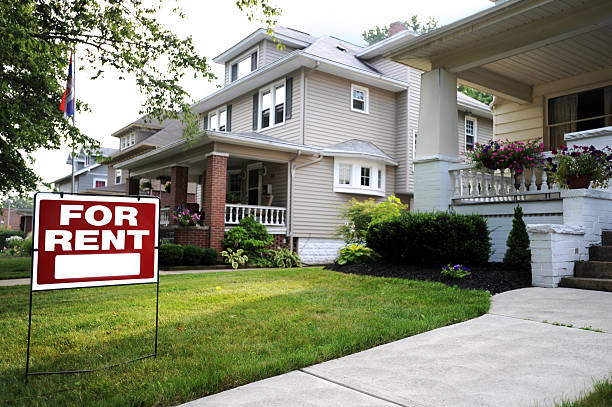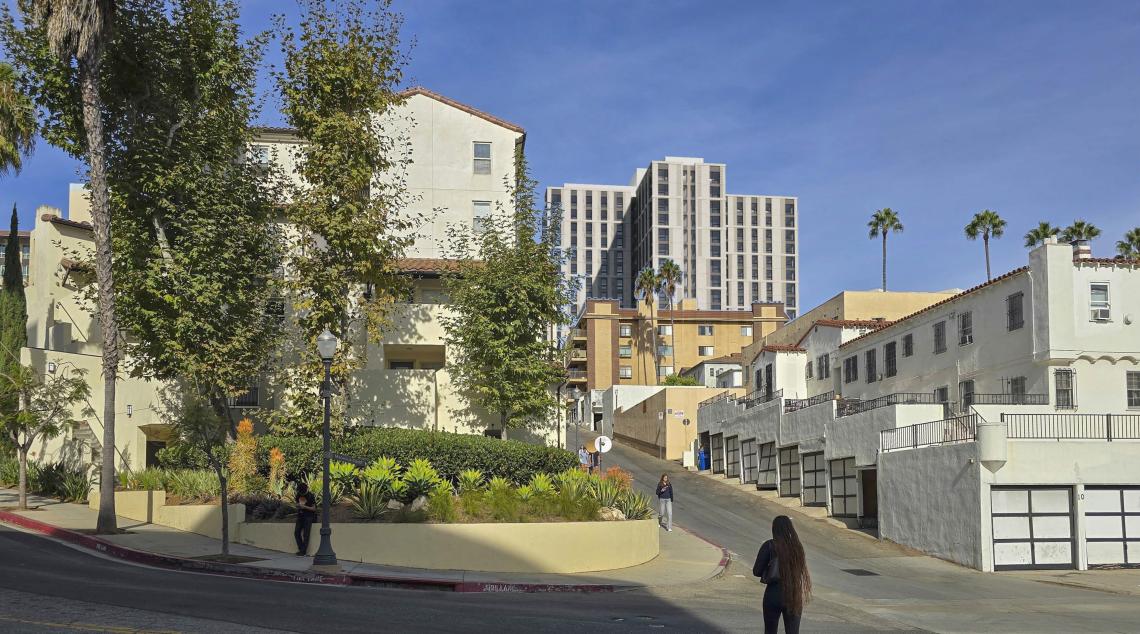Is Renting in Los Angeles Still “Worth It” in 2025?
The question “Is renting in Los Angeles even worth it anymore?” is not new. For renters, it often means frustration about high costs. While, for property owners, developers, and investors, it points to deeper market trends.
Table of Contents
ToggleIn 2025, Los Angeles is still a city of extremes. The median rent for a one-bedroom is over $2,500. Luxury rentals on the coast can cost $20,000 a month. Yet in some neighborhoods, you can still find apartments under $1,600.
Rising interest rates, high construction costs, and new zoning laws are changing the market. These forces are shaping how people rent — and how investors should respond.
So, the real question for investors is not “Is it worth it to rent?” but “Where is the opportunity?” and “How do I position my property to capture it?”
The Rental Landscape in Mid-2025
Los Angeles Rent Comparison — 2025
Compare typical monthly rents across popular LA neighborhoods.
Los Angeles is still one of the most expensive rental markets in the U.S. But the story in 2025 is not only about high prices. It’s also about shifting demand and new strategies.
Average Rents and Neighborhood Gaps
Citywide rents average around $2,700 a month.
Coastal areas like Santa Monica, Venice, and Playa Vista are over $4,000 for a two-bedroom.
Mid-Wilshire and Hollywood sit between $2,600 and $3,200.
Arlington Heights and Lincoln Heights are closer to $1,500–$1,800.
These gaps create very different markets within the same city. Luxury rents have stayed strong even after the wildfire surge faded earlier in the year. In top coastal markets, supply is still tight.

Growth Is Slowing
Rent growth is now about 3–4% a year. That’s far less than the double-digit jumps seen in 2021 and 2022.
Vacancy rates in premium areas remain low at around 4–5%. But in some mid-tier neighborhoods, vacancies are starting to rise as renters seek cheaper options.
JDJ Consulting Insight:
The market has shifted from “raise rents because you can” to “earn rent increases by adding value.” Investors who focus on upgrades, amenities, and repositioning will attract better tenants and keep units full.
What Keeps Demand Strong
People keep moving in, especially for tech, entertainment, and creative jobs.
With home prices near $1M and high mortgage rates, many stay renters longer.
Remote and hybrid work let people choose lifestyle-focused areas without buying.
So while renters may question if it’s worth the price, investors still see steady demand and clear opportunities.
Post-Wildfire Rental Shock in 2025
In January 2025, wildfires destroyed thousands of homes across Los Angeles County. The disaster displaced tens of thousands of residents almost overnight.
Short-Term Demand Surge
Many displaced homeowners turned to the rental market. This sudden demand pushed rents up, especially in high-end and furnished units.
Coastal luxury homes saw rents hit $20,000 a month.
Corporate leases and short-term furnished rentals filled up fast.
Vacancy rates in some neighborhoods dropped to near zero.
For property owners, this was a rare opportunity to secure premium tenants.
Price Gouging Risks
The state put price controls in place to prevent gouging. But enforcement lagged, and some landlords still faced legal complaints.
JDJ Consulting Insight:
Disaster-driven demand can be profitable, but it’s temporary. The key is to lock in longer leases while rates are high. At the same time, owners must follow all legal limits to avoid costly penalties.
Lasting Effects on the Market
Even after the surge faded, the wildfires left a mark. Some areas lost a large share of their housing stock. This keeps supply tight and supports rental demand in nearby neighborhoods.
For investors, this means:
Watch areas near disaster zones for sustained demand.
Consider rebuilding or redevelopment projects with new zoning rules in mind.
Prepare for competition from other owners chasing the same displaced tenants.
Rental Investment ROI Estimator
Quick estimate for buy-and-hold returns. Use conservative inputs for planning.
Legislative Changes Reshaping Supply in 2025
New housing laws in California are starting to change how and where rental units get built. For property owners and developers, these changes open new doors — but they also bring new competition.
Key Laws to Watch
Two major state bills passed in 2025:
SB 131 – Speeds up approval for infill housing and transit-oriented projects.
AB 130 – Expands what you can build on single-family lots, including duplexes and accessory dwelling units (ADUs).
These laws also cut down on delays from the California Environmental Quality Act (CEQA) for qualifying projects.
What This Means for Investors
Faster timelines: Projects that once took years may now move in months.
More flexibility: Owners can add units on underused lots without full rezoning battles.
Higher yield potential: Transit hubs and walkable areas may support higher rents and lower vacancy.
JDJ Consulting Perspective
This is a prime moment to reassess your portfolio. If you own land or older rental properties in the right zones, you can add units or redevelop for higher value. However, timing is critical — as more players enter the market, competition for good sites will increase.
At JDJ Consulting Group, we help clients identify the parcels, financing, and design strategies that align with these new rules. The goal is to move early, secure entitlements, and capture demand before the next wave of projects hits the market.
Rent vs. Buy — Why Renters Still Fuel the Market
In Los Angeles, the debate about renting versus buying is ongoing. For many residents, buying a home is simply out of reach. That reality shapes the rental market and creates long-term opportunities for property owners.
Homeownership Barriers
High prices: The median home price in LA is near $1 million.
High interest rates: Mortgage payments are often far above average rents.
Large down payments: Most buyers need $150,000–$200,000 upfront to compete.
These barriers mean more people rent for longer periods, even if they would prefer to own.
Renter Protections
California’s renter laws also keep people in the rental market:
AB 1482 caps annual rent increases at 5% plus inflation.
Just cause rules limit when and how tenants can be evicted.
For tenants, these laws add stability. For owners, they mean rent increases are steady but predictable, which helps with long-term planning.
Investor Takeaways
A deep renter pool: With ownership out of reach for many, demand stays strong.
Predictable returns: Controlled rent growth can still deliver solid yields in stable markets.
Targeted strategy: Well-located, mid-market units often fill faster and have lower turnover than luxury rentals.
JDJ Consulting Insight:
The rent-versus-buy gap is not closing anytime soon. Investors who understand this dynamic can focus on the right locations and property types, knowing a steady stream of renters will remain.
Strategic Opportunities in LA’s 2025 Rental Market
Even in a high-cost city, rental property can be a smart investment. The key is knowing where the demand is strongest and how to position each asset.
Where the Opportunities Are
Value-add renovations: Upgrading kitchens, baths, and shared spaces to attract tenants willing to pay more.
Mid-market repositioning: Targeting renters leaving luxury buildings for slightly cheaper, high-quality units.
Transit-oriented properties: Buying near new Metro stops to capture rising demand and appreciation.
Corporate and furnished rentals: Serving short-term needs after disasters or for business travel.
How Investors Can Act Now
Review your portfolio for underused or underperforming assets.
Identify lots that could support ADUs or small multifamily projects under new laws.
Watch for distressed sales or owners looking to exit.
Move quickly on locations with upcoming infrastructure improvements.
JDJ Consulting Insight:
Opportunities in 2025 require focus. The investors seeing the best returns are those who act early, upgrade smartly, and choose markets where renter demand is locked in for years.
JDJ Consulting Group’s View
Renting in Los Angeles is still worth it — for both residents who value flexibility and investors who know the market. While tenants weigh cost against lifestyle, owners can use targeted strategies to boost income and reduce vacancy.
The 2025 market rewards knowledge and timing. Laws are shifting, demand patterns are changing, and competition is growing. For investors, the winning move is not waiting to see what happens — it’s making informed decisions now.
At JDJ Consulting Group, we guide property owners, developers, and investors through these shifts.
From market analysis to permit strategy, we help you position assets for maximum return in one of the nation’s most complex housing markets.
Call us at (818) 793-5058 to schedule your free consultation with our real estate consultants — and make an informed decision about your next move.






